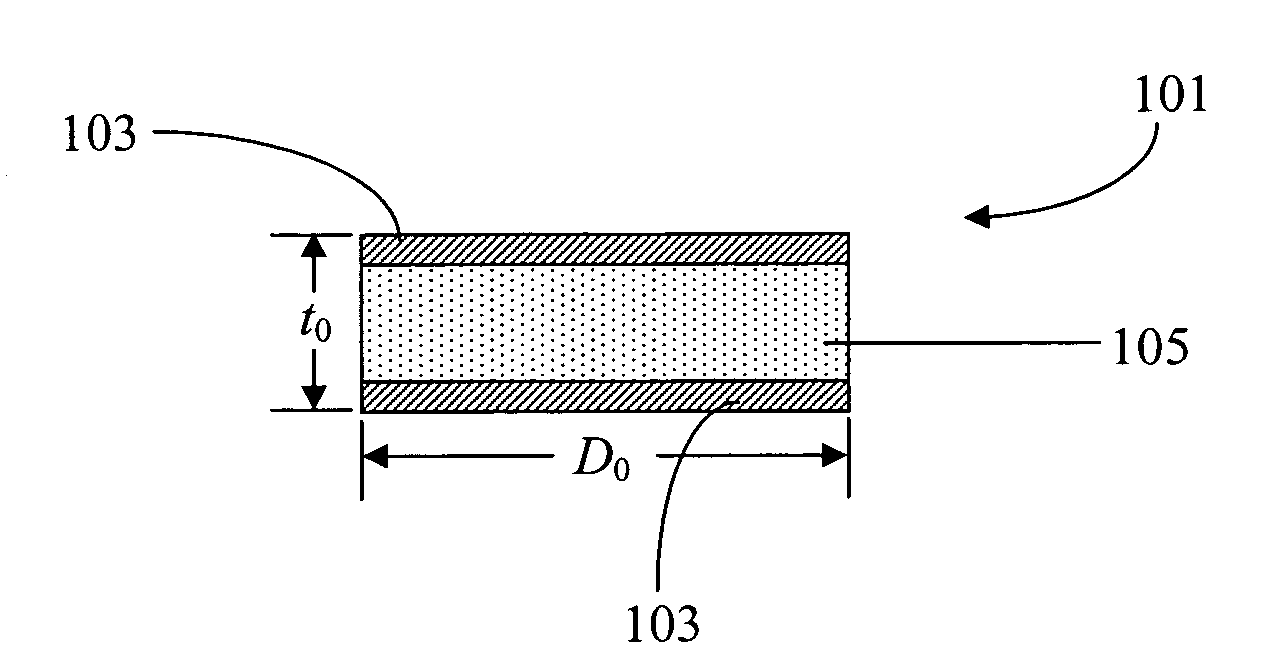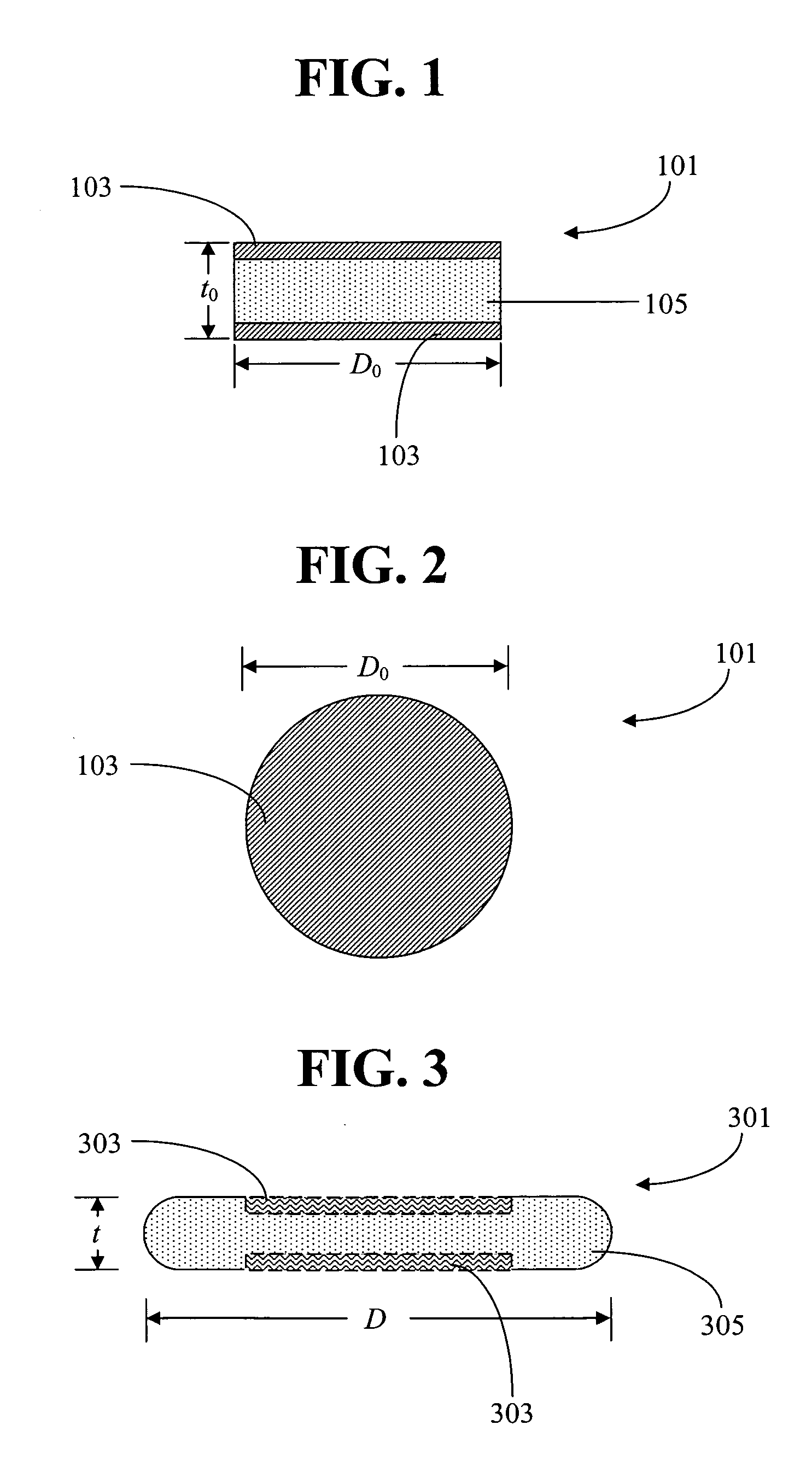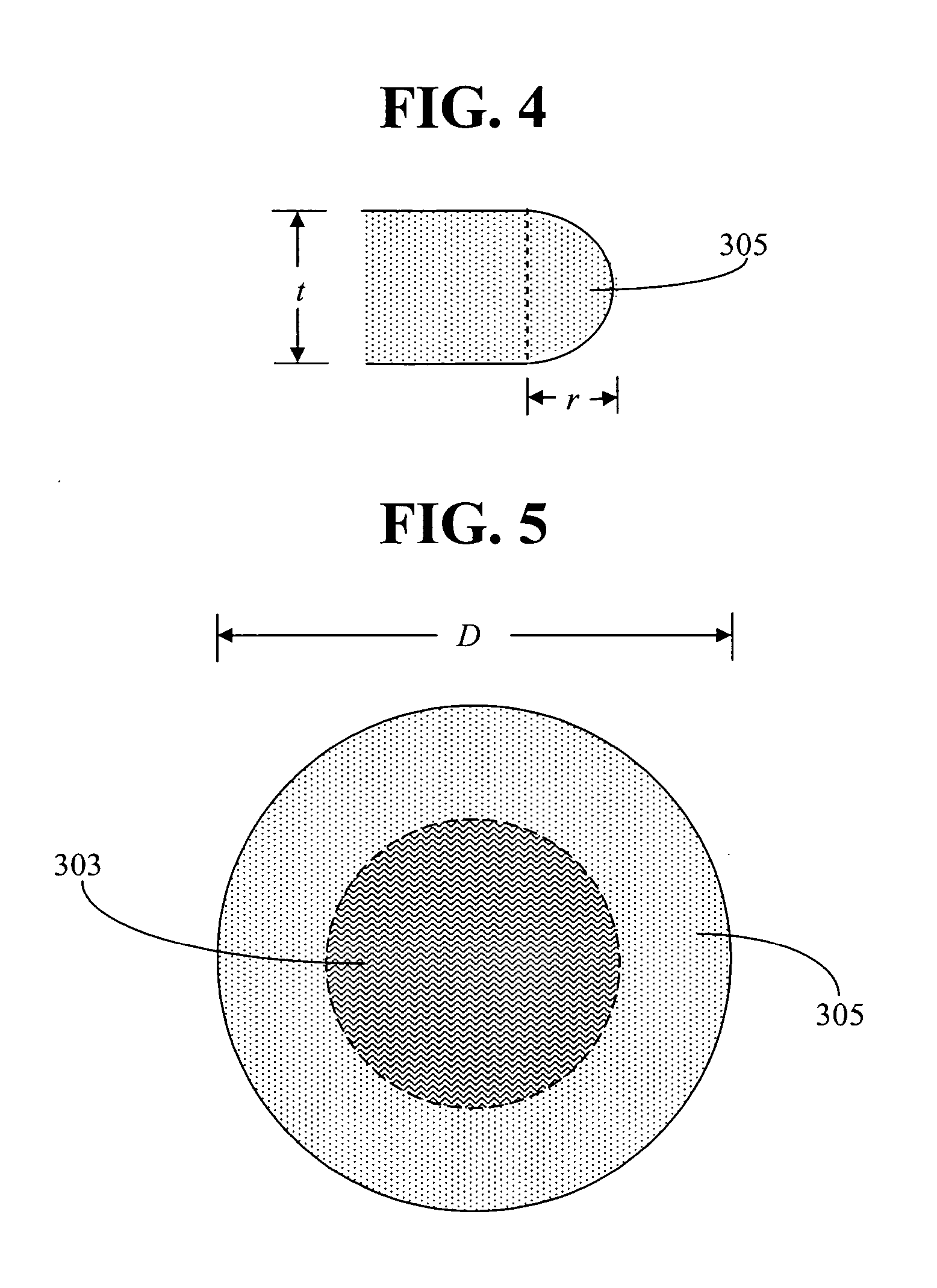Process for making low-OH glass articles and low-OH optical resonator
a technology of optical resonators and glass articles, which is applied in the field of process for making low-oh glass articles and low-oh optical resonators, can solve the problems of attenuation of optical signals, noise addition to the resonant signal produced, and tight process control, so as to reduce the curvature radius, reduce the q of the resonator, and reduce the -oh level
- Summary
- Abstract
- Description
- Claims
- Application Information
AI Technical Summary
Benefits of technology
Problems solved by technology
Method used
Image
Examples
example
In this example, two fused silica-based resonator disks, designated as disk A and disk B, were subjected to chlorine treatment of the process of the present invention. The resonators have cylindrical shape and a curved rim. The two disks were measured to have identical center thickness of 0.49 mm, a rim thickness of 0.67 mm, and a radius of curvature of the rim 0.34 mm.
Both disks were subjected to flame polishing of rim before the chlorine treatment of the present invention.
Before chlorine treatment, the two disks were measured for β-OH level using a Bio-Rad FT-IR microscope. To prepare the disk samples for the characterization, they were first cleaned with micro-solution, rinsed with deionized water, then rinsed with isopropyl alcohol and dried. The samples were then placed on the Bio-Rad microscope mapping stage. The microscope using the 15× Cassegrain objective was set up to sample at 16 cm−1 resolution with a signal gain of 4,128. Scans were averaged at each point and ratio...
PUM
| Property | Measurement | Unit |
|---|---|---|
| temperature | aaaaa | aaaaa |
| viscosity | aaaaa | aaaaa |
| pressure | aaaaa | aaaaa |
Abstract
Description
Claims
Application Information
 Login to View More
Login to View More - R&D
- Intellectual Property
- Life Sciences
- Materials
- Tech Scout
- Unparalleled Data Quality
- Higher Quality Content
- 60% Fewer Hallucinations
Browse by: Latest US Patents, China's latest patents, Technical Efficacy Thesaurus, Application Domain, Technology Topic, Popular Technical Reports.
© 2025 PatSnap. All rights reserved.Legal|Privacy policy|Modern Slavery Act Transparency Statement|Sitemap|About US| Contact US: help@patsnap.com



